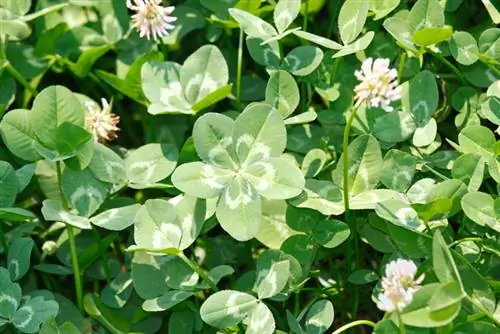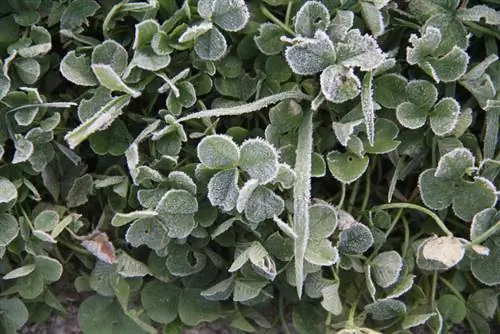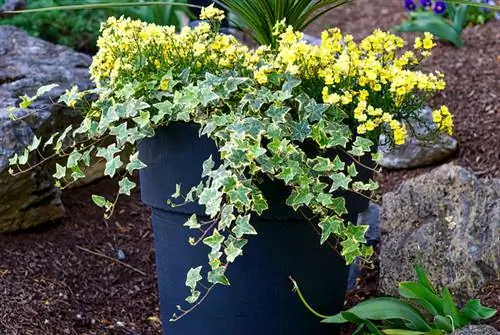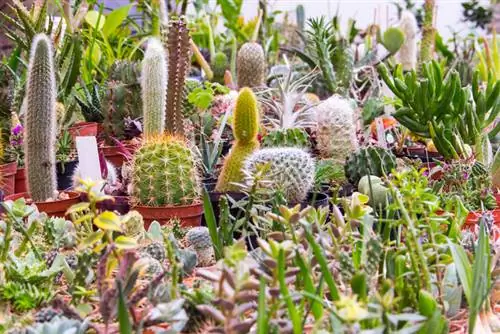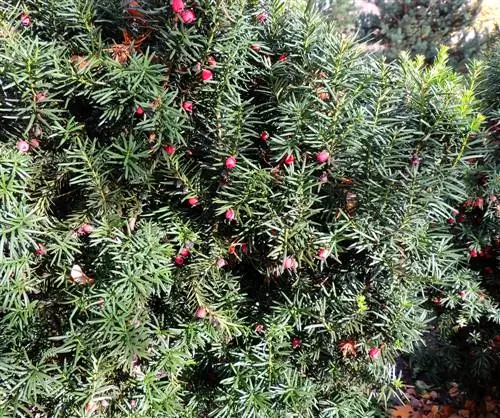- Author admin [email protected].
- Public 2023-12-16 16:46.
- Last modified 2025-01-23 11:20.
The plant genus Clover (Trifolium) now has over 245 varieties, 16 of which are grown in agriculture as fodder plants or as green manure. In common usage, other plants such as wood sorrel (genus Oxalis) are also counted as clover, although they are only very distantly taxonomically related to the genus Trifolium.
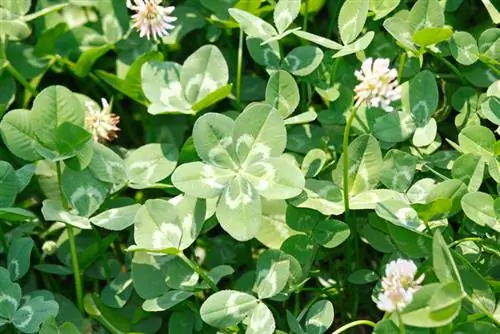
What types of clover are most common in gardens?
The most common types of clover in gardens are meadow clover (Trifolium pratense), white clover (Trifolium repens) and wood sorrel (Oxalis corniculata). Horn trefoil (Lotus corniculatus), Persian clover (Trifolium resupinatum) and Alexandrine clover (Trifolium alexandrinum) are also important for agriculture and soil improvement.
The most common types of clover in the garden
Various types of clover can spread on their own in the garden or can be cultivated specifically. While some gardeners consciously grow clover instead of lawns, others fight desperately to eradicate clover from the garden. The most common types of clover in European gardens are:
- Meadow clover or red clover (Trofolium pratense)
- White clover (Trifolium repens)
- Sorrel (Oxalis corniculata)
Other well-known clover varieties are:
- Horn trefoil (Lotus corniculatus)
- Persian clover (Trifolium resupinatum)
- Alexandrine clover (Trifolium alexandrinum)
Special features of meadow clover
Meadow clover is the most important fodder plant in terms of cultivated area among all types of clover. The meadow clover, which is often grown as a fodder plant, is usually also referred to as red clover due to its red-colored inflorescences. This type of clover is one of the oldest agricultural varieties in Europe, as meadow clover was already cultivated in Flanders, Italy and Spain in the 16th century. Like the other varieties of agriculturally used clover, meadow clover loves relatively cool, moist locations with rainy summers. This is due to the fact that these plants have a comparatively high water requirement. In addition, red clover should be grown on rather heavy clay soil; meadow clover does not tolerate locations with acidic soil material very well.
Characteristics of white clover
In contrast to red clover, the so-called white clover (Trifolium repens) forms creeping shoots that grow close to the ground and grow roots. Among the fodder legumes, white clover is the only plant that can withstand constant grazing and stress on the sward from being stepped on in the long term. This is why this type of clover is particularly suitable as a lawn replacement. White clover reacts less sensitively to cold and drought phases than red clover. White clover is also somewhat less demanding than meadow clover when it comes to soil conditions.
Improving the soil with clover
The different varieties of agriculturally used clover improve the soil in physical and chemical ways. On the one hand, the fine roots of clover loosen the soil deeply and can thus prevent soil damage caused, for example, by regular grain cultivation. On the other hand, the nodule bacteria on the clover roots also accumulate nitrogen in the soil, which is important for the growth of many plants. However, you should not overdo it with the cultivation of clover and should take cultivation breaks of three to four years between individual clover crop rotation rounds for white clover and five to eight years for red clover.
When clover becomes a pest in the lawn
Under certain circumstances it can happen that the clover spreads unintentionally in the lawn. If there is a lot of clover spreading in the lawn, fertilizing with horn shavings (€32.00 on Amazon) can help: These promote the he althy growth of the grass without supplying the clover with additional phosphate (as contained in other fertilizers). In spring it can also be helpful to thoroughly remove the clover from the lawn with a scarifier. The bare areas should then be supplied with fertilizer and the lawn should be reseeded. In severe cases, chemical agents can also be used, which only have an effect on dicotyledonous clover and not on monocotyledonous grasses.
Tip
The lucky clover (Oxalis tetraphylla), popular as a lucky gift on New Year's Eve, is particularly popular because of its four-leaf clovers. Due to its sensitivity to frost, it is usually grown indoors, but can also be cultivated outdoors in pots in summer. The small storage tubers of the lucky clover are even edible.

